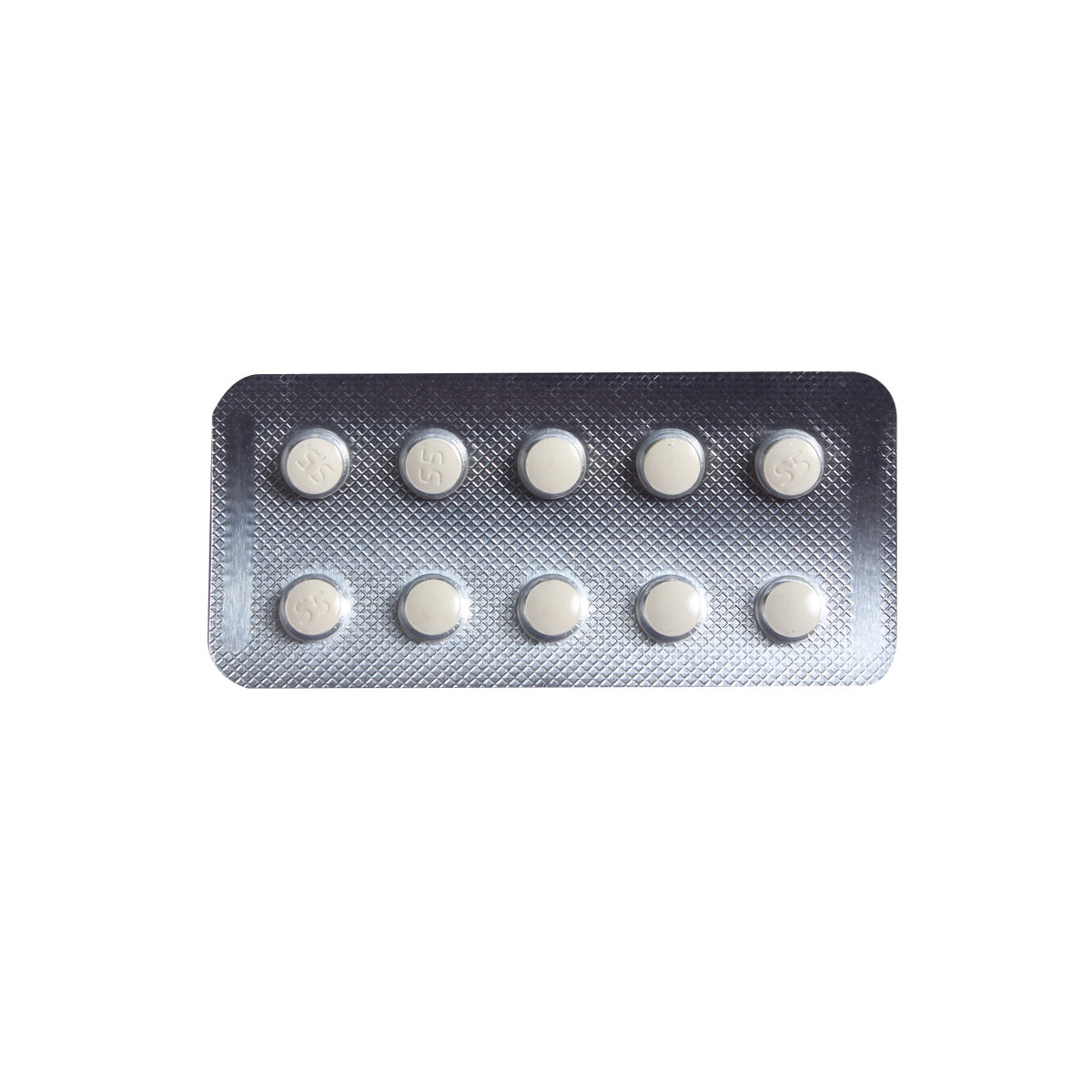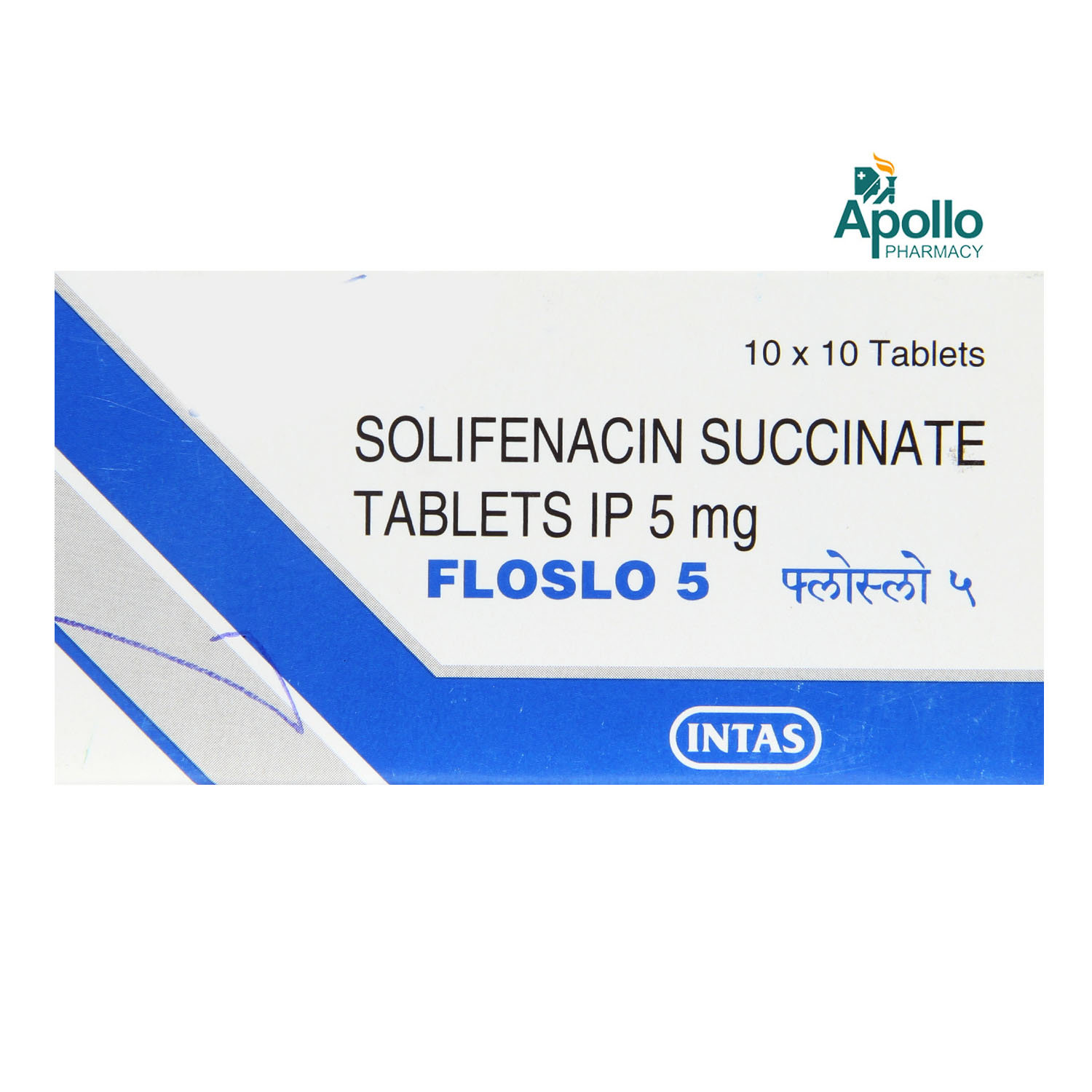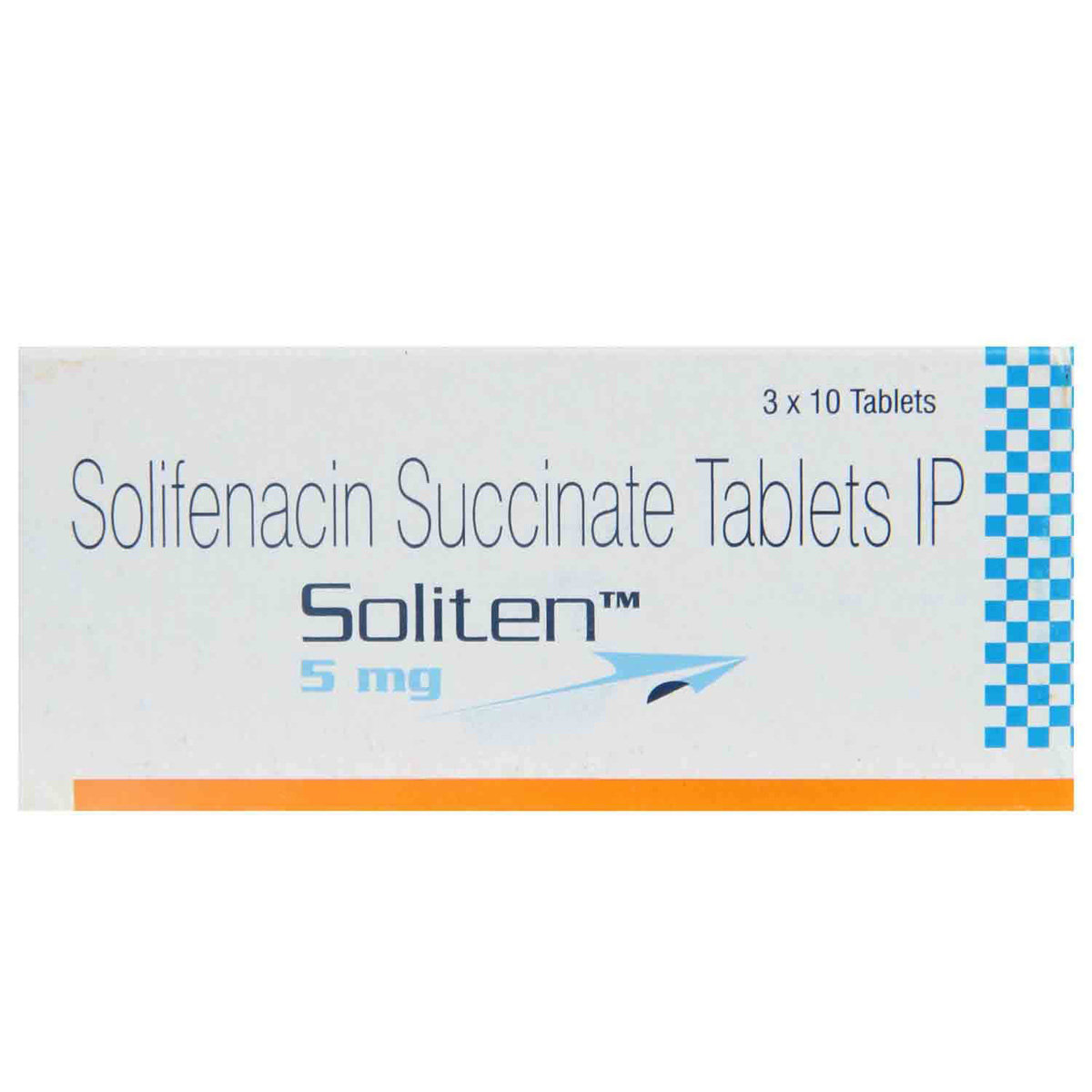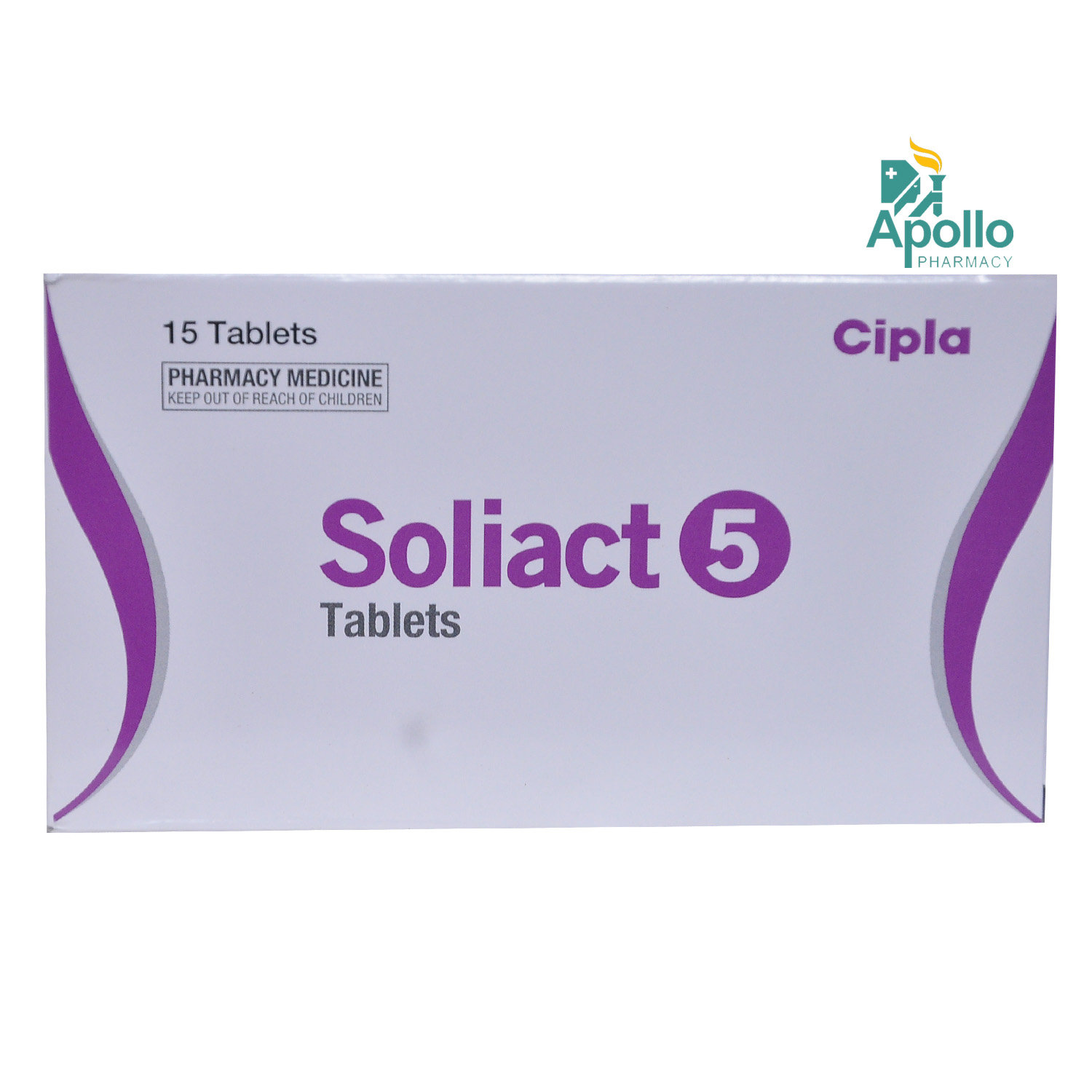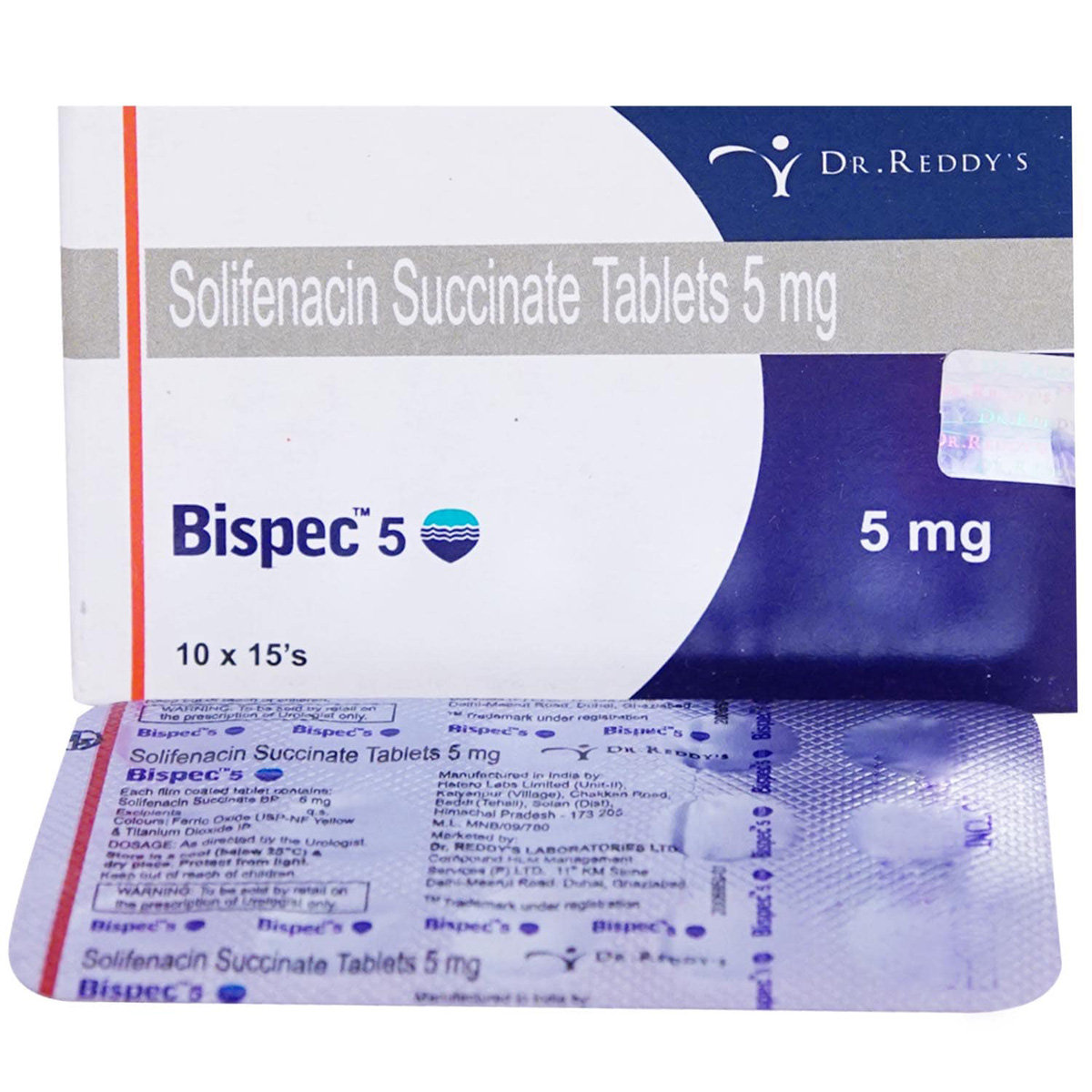Vesiact Tablet 10's


MRP ₹196
(Inclusive of all Taxes)
₹29.4 Cashback (15%)
Provide Delivery Location
Online payment accepted
 Prescription drug
Prescription drugWhats That
Composition :
Manufacturer/Marketer :
Consume Type :
Return Policy :
Expires on or after :
About Vesiact Tablet
Vesiact Tablet belongs to the group of medications called ‘urinary antagonists' or 'antispasmodics' primarily used in the treatment of overactive bladder (OAB) symptoms. Overactive bladder is a condition in which the urinary bladder muscles constrict uncontrollably, thereby causing an urgent need to urinate, frequent urination, and inability to control urination. Besides this, Vesiact Tablet is also used for the treatment of neurogenic detrusor overactivity (a bladder control condition caused by neurological problems) in children 2 years and above.
Vesiact Tablet contains ‘Solifenacin’ that relaxes the urinary bladder muscles which in turn decreases the activity of the overactive bladder. In an overactive bladder, muscle contractions occur before the full expansion of the bladder causing the patient to have frequent urges to urinate. Vesiact Tablet stops these sudden contractions of urinary bladder muscles thereby enabling control over urination. Thus, it increases the amount and volume of urination that can be held by your bladder.
Take Vesiact Tablet as prescribed by the doctor. Common side-effects of Vesiact Tablet are dry mouth, blurred vision, constipation, nausea, dyspepsia (indigestion), abdominal pain, burping or belching, heartburn, and stomach upset. Inform your doctor if these side effects do not go away or get worse.
Do not take Vesiact Tablet if you are allergic to ‘solifenacin’ or any other ingredients present in it. Before taking Vesiact Tablet , inform your doctor if you have kidney disease, liver disease, bladder blockage, myasthenia gravis (a muscle disease), stomach or bowel problems (including constipation), glaucoma (increased pressure in the eye causing loss of vision), or a history of heart rhythm problems (including QT prolongation). Also, inform your doctor if you are pregnant or breastfeeding. Inform your doctor if you have an intolerance to sugars as this medicine contains lactose. Do not take grapefruit or grapefruit juice with this medication. Avoid driving or operating heavy machinery as this medicine may cause dizziness.
Uses of Vesiact Tablet
Directions for Use
Medicinal Benefits
Vesiact Tablet contains ‘solifenacin’ that belongs to the class of medications called 'anticholinergics'. It can decrease the activity of the overactive bladder. In an overactive bladder, muscle contractions occur before the full expansion of the bladder causing the patient to have frequent urges to urinate. Vesiact Tablet can stop these sudden contractions of bladder muscles. It enables control over urination and increases the amount of urine that can be held by your bladder.
Storage
- Inform your doctor about dry mouth symptoms. They may adjust your medication regimen or prescribe additional medications to manage symptoms.
- Drink plenty of water throughout the day to help keep your mouth moist and alleviate dry mouth symptoms.
- Chew sugar-free gum or candies to increase saliva production and keep your mouth moisturized.
- Use saliva substitutes, such as mouthwashes or sprays, only if your doctor advises them to help moisturize your mouth and alleviate dry mouth symptoms.
- Avoid consuming smoking, alcohol, spicy or acidic foods, and other irritants that may aggravate dry mouth symptoms.
- Schedule regular dental check-ups to keep track of your oral health and handle any dry mouth issues as they arise.
- Inform your doctor about your constipation symptoms. They may adjust your medication or advise alternative treatments.
- Stay hydrated by drinking sufficient of water (at least 8-10 glasses a day) to help soften stool and promote bowel movements.
- Increase fibre intake by eating foods high in fibre, such as fruits, whole grains, vegetables and legumes, to help bulk up the stool.
- Establish a bowel routine by trying to go to the bathroom at the same time each day to train your bowels.
- Engaging in regular exercise, like walking or yoga, can support in bowel movement stimulation.
- Consult your doctor if constipation persists, and discuss alternative treatments or adjustments to your medication.
- Inform your doctor about the nausea and discuss possible alternatives to the medication or adjustments to the dosage.
- Divide your daily food intake into smaller, more frequent meals to reduce nausea.
- Opt for bland, easily digestible foods like crackers, toast, plain rice, bananas, and applesauce.
- Avoid certain foods that can trigger nausea, such as fatty, greasy, spicy, and smelly foods.
- Drink plenty of fluids, such as water, clear broth, or electrolyte-rich beverages like coconut water or sports drinks.
- Use ginger (tea, ale, or candies) to help relieve nausea.
- Get adequate rest and also avoid strenuous activities that can worsen nausea.
- Talk to your doctor about taking anti-nausea medication if your nausea is severe.
- Record when your nausea occurs, what triggers it, and what provides relief to help you identify patterns and manage your symptoms more effectively.
- You can take your medicine with meals to lower the chances of getting stomach pain.
- Avoid foods that are acidic, spicy, sugary, or greasy.
- Eat foods that are easily digestible such as rice, toast, and bananas.
- Eat your meals in smaller amounts throughout the day to prevent strain on your stomach and digestion.
- Drink water or fluids to stay hydrated and prevent stomach upset.
- Use a heating pad or massage your stomach area.
- Engage in mild physical activities such as yoga and walking.
- Preventing Vomiting (Before it Happens)
- Take medication exactly as prescribed by your doctor. This can help minimize side effects, including vomiting.
- Having a small meal before taking your medication can help reduce nausea and vomiting.
- Talk to your doctor about taking anti-nausea medication along with your prescribed medication.
- Managing Vomiting (If it Happens)
- Try taking ginger in the form of tea, ale, or candy to help alleviate nausea and vomiting.
- What to Do if Vomiting Persists
- Consult your doctor if vomiting continues or worsens, consult the doctor for guidance on adjusting your medication or additional treatment.
- Drink warm fluids such as warm water with honey, broth, soup or herbal tea to soothe sore throat.
- Gargle with warm salt water.
- Suck on lozenges to increase the production of saliva and soothe your throat.
- Use a humidifier to soothe sore throat as it adds moisture to the air and makes breathing easier.
- Tell your doctor about the cough symptoms you're experiencing, which may be triggered by your medication.
- Your doctor may adjust your treatment plan by changing your medication, adding new medications, or providing guidance on managing your cough symptoms.
- Practice good hygiene, including frequent handwashing, avoiding close contact with others, and avoiding sharing utensils or personal items.
- Stay hydrated by drinking plenty of fluids, such as water, tea, or soup, to help thin out mucus and soothe your throat.
- Get plenty of rest and engage in stress-reducing activities to help your body recover. If your cough persists or worsens, consult your doctor for further guidance.
Drug Warnings
Do not take Vesiact Tablet if you are allergic to ‘solifenacin’ or any contents of it. Before taking Vesiact Tablet , inform your doctor if you are pregnant or breastfeeding or if you have kidney disease, liver disease, bladder blockage, controlled narrow-angle glaucoma, or stomach or bowel problems (including constipation), or a history of heart rhythm problems (including QT prolongation). Vesiact Tablet has lactose, so inform your doctor if you have an intolerance to any sugars. Vesiact Tablet may cause dizziness or blurred vision. So, do not drive or operate any heavy machinery. It can increase body temperature by decreasing sweating. So, avoid hot weather or doing strenuous exercise as this may cause overheating leading to unwanted effects.
Drug-Drug Interactions
Drug-Drug Interactions
Login/Sign Up
Taking Vesiact Tablet and Potassium chloride together can increase the risk of stomach ulcers, bleeding, and stomach injury.
How to manage the interaction:
Taking Vesiact Tablet with Potassium chloride is not recommended, as it can lead to an interaction, it can be taken if a doctor has prescribed it. However, if you experience severe stomach pain, bloating, sudden lightheadedness or dizziness, nausea, vomiting (especially with blood), decreased hunger, dark, tarry stools, consult the doctor immediately. Do not discontinue any medications without a doctor's advice.
The blood levels and effects of Vesiact Tablet may be greatly increased when combined with itraconazole.
How to manage the interaction:
Vesiact Tablet and Itraconazole may interact, however, if recommended by a physician, they are safe to consume. Consult a doctor if you feel sleepy, or uneasy, have an irregular heartbeat, have blurry vision, have trouble urinating, have a dry mouth, a headache, have digestive problems, or have constipation. Without consulting a doctor, never stop taking any medication.
Using Mesoridazine together with Vesiact Tablet can increase the risk of an irregular heart rhythm.
How to manage the interaction:
Taking Mesoridazine with Vesiact Tablet is not recommended, please consult your doctor before taking it. You should seek immediate medical attention if you develop sudden dizziness, lightheadedness, fainting, shortness of breath, or heart palpitations call a doctor.
Coadministration of Vesiact Tablet with Delavirdine may significantly increase the blood levels of Vesiact Tablet.
How to manage the interaction:
There may be a possibility of interaction between Vesiact Tablet and Delavirdine, but it can be taken if prescribed by a doctor. If you experience drowsiness, dizziness, irregular heartbeat, blurry vision, difficulty urinating, dry mouth, headache, gastrointestinal upset, or constipation. Do not stop using any medications without talking to a doctor.
Taking Vesiact Tablet with Efavirenz can increase the risk or severity of irregular heart rhythms.
How to manage the interaction:
Taking Vesiact Tablet with Efavirenz together can result in an interaction, it can be taken if your doctor has advised it. However, if you experience sudden dizziness, lightheadedness, fainting, shortness of breath, chest pain or tightness, rapid heartbeat, or memory loss, contact a doctor immediately. Do not discontinue any medications without consulting a doctor.
Using moxifloxacin together with Vesiact Tablet can increase the risk of an irregular heart rhythm.
How to manage the interaction:
Taking Moxifloxacin with Vesiact Tablet together can result in an interaction, it can be taken if your doctor has advised it. However, if you experience sudden dizziness, lightheadedness, fainting, shortness of breath, or rapid heartbeat, contact your doctor immediately. Do not discontinue any medications without first consulting your doctor.
Coadministration of Vesiact Tablet with Amprenavir may significantly increase the blood levels of Vesiact Tablet.
How to manage the interaction:
There may be a possibility of interaction between Vesiact Tablet and Amprenavir, but it can be taken if prescribed by a doctor. If you experience drowsiness, dizziness, irregular heartbeat, blurry vision, difficulty urinating, dry mouth, headache, gastrointestinal upset, or constipation. Do not stop using any medications without talking to a doctor.
Coadministration of Bedaquiline with Vesiact Tablet can increase the risk of an irregular heart rhythm.
How to manage the interaction:
Taking Bedaquiline with Vesiact Tablet together can result in an interaction, it can be taken if your doctor has advised it. However, if you experience sudden dizziness, lightheadedness, fainting, shortness of breath, or rapid heartbeat, contact your doctor immediately. Do not discontinue any medications without first consulting your doctor.
Coadministration of Vesiact Tablet with Ceritinib may significantly increase the blood levels of Vesiact Tablet.
How to manage the interaction:
Although there is an interaction between Vesiact Tablet and ceritinib, it can be taken if prescribed by a doctor. If you experience drowsiness, blurry vision, difficulty urinating, headache, or constipation. Do not stop using any medications without talking to a doctor.
Coadministration of Ivabradine with Vesiact Tablet can increase the risk or severity of irregular heart rhythms.
How to manage the interaction:
Taking Ivabradine with Vesiact Tablet together can result in an interaction, it can be taken if your doctor has advised it. However, contact a doctor immediately if you experience sudden dizziness, lightheadedness, fainting, shortness of breath, chest pain or tightness, rapid heartbeat, or memory loss. Do not discontinue any medications without consulting a doctor.
Drug-Food Interactions
Drug-Food Interactions
Login/Sign Up
Diet & Lifestyle Advise
- Eat fresh fruits like pears, banana, citrus fruits, and green vegetables like beans and potatoes.
- Try to take cranberry juice as it helps in minimizing urinary infections.
- Avoid coffee, tea, and carbonated drinks which contains caffeine.
- Do not consume processed, fried, or spicy foods, as these foods can irritate your bladder.
- Limit alcohol intake as it can increase the risk of side-effects.
- Quit smoking and exercise regularly.
Side Effects of Vesiact Tablet
- Dry mouth
- Blurred vision
- Constipation
- Nausea
- Dyspepsia (indigestion)
- Urinary tract infections
- Blurred vision
- Abdominal pain
- Burping or belching
- Heartburn
- Stomach upset
Habit Forming
Therapeutic Class
Product Substitutes
Drug-Diseases Interactions
Drug-Diseases Interactions
Login/Sign Up
FAQs
Vesiact Tablet is used to treat an overactive bladder in which an individual is unable to control urination and always have a strong urge to urinate. Vesiact Tablet prevents these sudden bladder muscle contractions and increasing the volume and amount of urine that the bladder can hold. Thus, Vesiact Tablet helps to control the release of urine and helps reduce symptoms of OAB like a strong urge to urinate, frequent urination and reduced urine flow.
Vesiact Tablet may cause blurred vision in some cases. Consult your doctor immediately if this condition persists or worsens while using this medicine.
Ketoconazole is an antifungal medicine and it may interact with Vesiact Tablet . So, inform your doctor about all the prescription and non-prescription medicines before taking Vesiact Tablet to avoid unwanted effects.
Dry mouth, constipation, urinary tract infection and blurred vision are some of the common side effects of Vesiact Tablet .
If you have bladder problems, stomach problems, narrow-angle glaucoma, liver/kidney problems and irregular heartbeat, please contact a doctor before taking Vesiact Tablet .
Dry mouth is the most common side effects of Vesiact Tablet , so you can drink plenty of fluids or water, suck hard candy or ice chips, chew (sugarless) gum, or use a saliva substitute. However, if you are a kidney patient before taking any fluid or electrolytes, it is better to consult a doctor.
If you are taking antidiabetic medicines (pramlintide), potassium tablets and antifungals (like itraconazole, ketoconazole), among others, let your doctor know about these drugs before using Vesiact Tablet . These medicines may affect the working of Vesiact Tablet and slow its excretion from the body.
Drug-Drug Interactions Checker List
- METOCLOPRAMIDE
- CISAPRIDE
- KETOCONAZOLE
- RITONAVIR
- NELFINAVIR
- ITRACONAZOLE
- VERAPAMIL
- DILTIAZEM
- RIFAMPICIN
- PHENYTOIN
- CARBAMAZEPINE
Special Advise
- Vesiact Tablet is not recommended for the children less than 2 years of age.
- Intake of Vesiact Tablet can make you sweat less, thereby increasing the chance of having a heat stroke in summer. So avoid doing tasks which may cause to overheat.
- Intake of Vesiact Tablet may occasionally cause blurry vision and dizziness so avoid driving a motor vehicle, operate heavy machinery and performing hazardous tasks which require mental alertness as well.
Disease/Condition Glossary
Overactive bladder (OAB): In normal conditions, when the urinary bladder is filled with urine, it sends a message to the brain that an individual is ready to urinate. During the urination process, bladder muscles contracts which ultimately leads to a uniform flow of urine. Contrary to this, in Overactive bladder (OAB), the urinary bladder muscles start contracting before the urine is filled in the urinary bladder, thereby causing frequent urges to urinate. Vesiact Tablet prevents these sudden bladder muscle contractions and increasing the volume and amount of urine that the bladder can hold. Thus, Vesiact Tablet helps to control the release of urine and helps reduce symptoms of OAB like a strong urge to urinate, frequent urination and reduced urine flow.

Have a query?
Buy best Genito Urinary products by
Cipla Ltd
Sun Pharmaceutical Industries Ltd
Intas Pharmaceuticals Ltd
Ipca Laboratories Ltd
Leeford Healthcare Ltd
Dr Reddy's Laboratories Ltd
Lupin Ltd
Alkem Laboratories Ltd
Msn Laboratories Pvt Ltd
Zydus Healthcare Ltd
Demorbus India Pvt Ltd
Mankind Pharma Pvt Ltd
Overseas Health Care Pvt Ltd
RPG Life Sciences Ltd
La Renon Healthcare Pvt Ltd
Alembic Pharmaceuticals Ltd
Corona Remedies Pvt Ltd
Macleods Pharmaceuticals Ltd
Aristo Pharmaceuticals Pvt Ltd
Fourrts India Laboratories Pvt Ltd
Tas Med India Pvt Ltd
Micro Labs Ltd
Samarth Life Sciences Pvt Ltd
Zydus Cadila
Emcure Pharmaceuticals Ltd
Hetero Drugs Ltd
Ignyx Pharmaceuticals
Renspur Healthcare Pvt Ltd
Steris Healthcare
Alniche Life Sciences Pvt Ltd
Septalyst Lifesciences Pvt Ltd
Ajanta Pharma Ltd
Elder Pharmaceuticals Ltd
Merynova Life Sciences India Pvt Ltd
Tppl Pharmaceuticals Pvt Ltd
Walter Bushnell
Aar Ess Remedies Pvt Ltd
Knoll Healthcare Pvt Ltd
Lividus Pharmaceuticals Pvt Ltd
Meditrex Pharma
Medrhans Pharmaceuticals Pvt Ltd
Neuten HealthCare
Redmed Medical Services
Talohsty Medmark Pvt Ltd
Zycris Healthcare
East West Pharma India Pvt Ltd
Globus Remedies Ltd
Golden Square Lab Pvt Ltd
Hetero Healthcare Pvt Ltd
Modi Mundipharma Pvt Ltd
Nephurocare Pharma Pvt Ltd
Pfizer Ltd
TTK Healthcare Ltd
Votary Laboratories (India) Ltd
Albus Healthcare Pvt Ltd
Delvin Formulations (P) Ltd
Indoco Remedies Ltd
Intra Life Pvt Ltd
Megma Healthcare Pvt Ltd
Morepen Laboratories Ltd
Qren Life Sciences Pvt Ltd
Steadfast MediShield Pvt Ltd
Unipark Biotech Pvt Ltd
Akumentis Healthcare Ltd
Biokindle Lifesciences Pvt Ltd
Calren Care Lifesciences Pvt Ltd
Chemo Biological Ltd
Chemo Healthcare Pvt Ltd
Euniche Life Sciences
Himeros Pharmaceuticals Pvt Ltd
Hospimax Healthcare Pvt Ltd
Kiosence Health Care Pvt Ltd
Lia Life Sciences Pvt Ltd
Panacea Biotec Ltd
Primus Remedies Pvt Ltd
Rencord Life Sciences Pvt Ltd
Shilpa Medicare Ltd
Stadmed Pvt Ltd
Abbott India Ltd
Ameya Pharmaceuticals & Chemicals Pvt Ltd
Ardent Life Sciences Pvt Ltd
Asterima Pharmaceuticals Pvt Ltd
Astrum Healthcare Pvt Ltd
Cadila Healthcare Ltd
De Renon
Fibovil Pharmaceuticals Pvt Ltd
Koye Pharmaceuticals Pvt Ltd
Linux Laboratories Pvt Ltd
MMC Healthcare Ltd
Neovae Biomedics Pvt Ltd
Olcare Laboratories Pvt Ltd
Oxygen Pharma Care Pvt Ltd
Prevego Healthcare & Research Pvt Ltd
Rene Lifescience
Sanzyme Pvt Ltd
Solis Ortus Remedies Pvt Ltd
Syndicate Life Sciences Pvt Ltd
Tycoon Pharmaceuticals Pvt Ltd
Vasu Organics Pvt Ltd
Walron Health Care Pvt Ltd
Alcohol
Caution
Avoid taking alcohol as it increases the risk of side-effects.
Pregnancy
Unsafe
Vesiact Tablet is a category C medicine. It should be used in pregnant women if the benefits outweigh the risks.
Breast Feeding
Caution
Vesiact Tablet should be used in breastfeeding mothers only if clinically needed.
Driving
Caution
Vesiact Tablet may cause dizziness and blurred vision. So, avoid driving or operating heavy machinery after using Vesiact Tablet .
Liver
Caution
Vesiact Tablet should be used with caution in patients with liver diseases. Dose adjustments may be necessary.
Kidney
Caution
Vesiact Tablet should be used with caution in patients with kidney diseases. Dose adjustments may be necessary.
Children
Caution
Vesiact Tablet should not be used in children below 12 years of age unless prescribed by a doctor.






